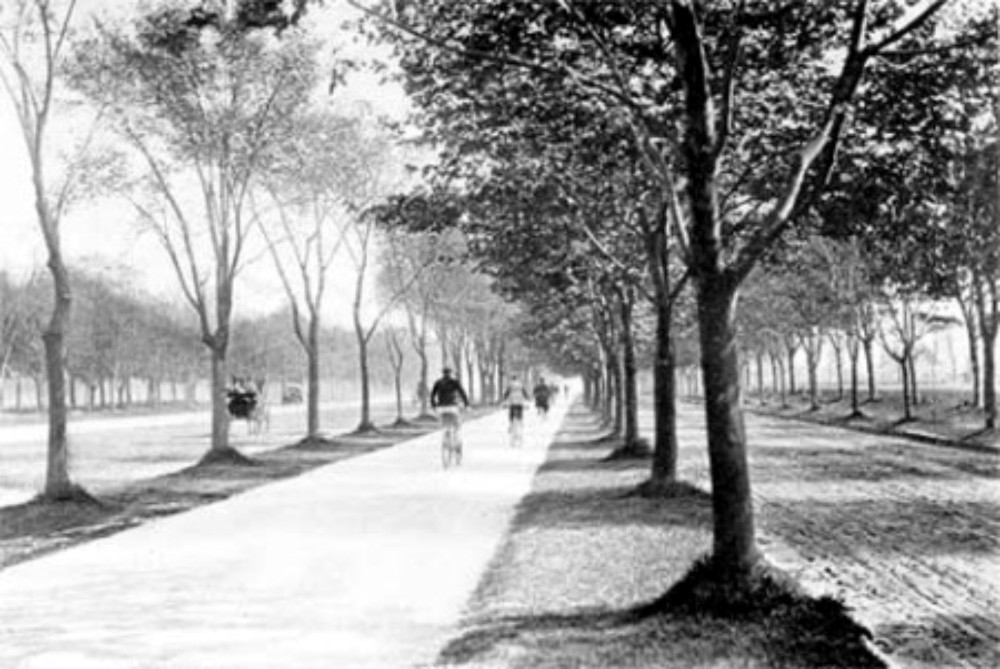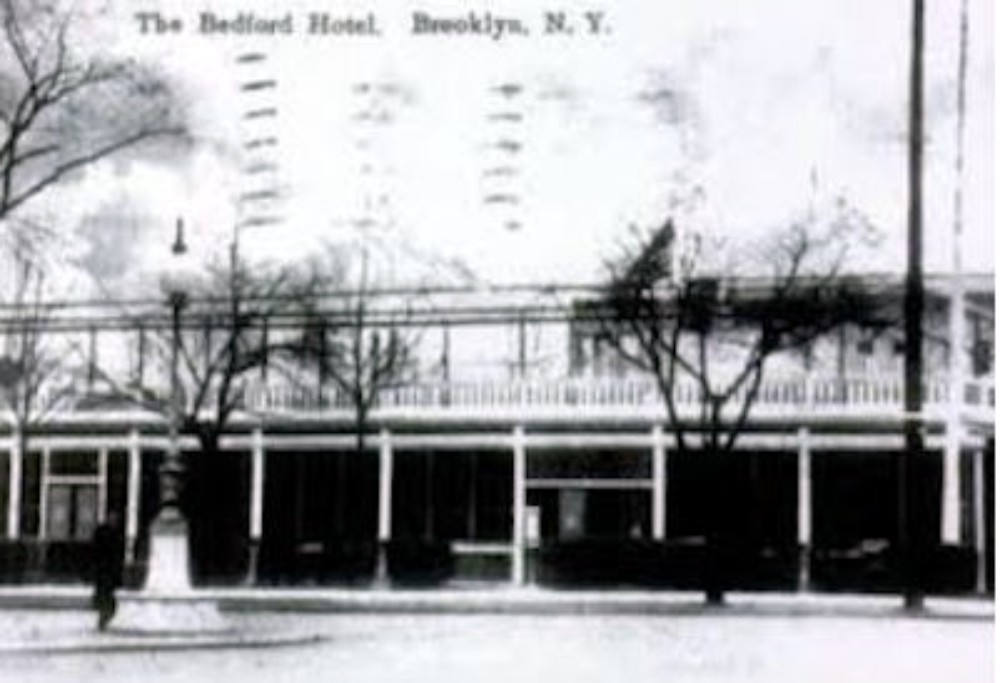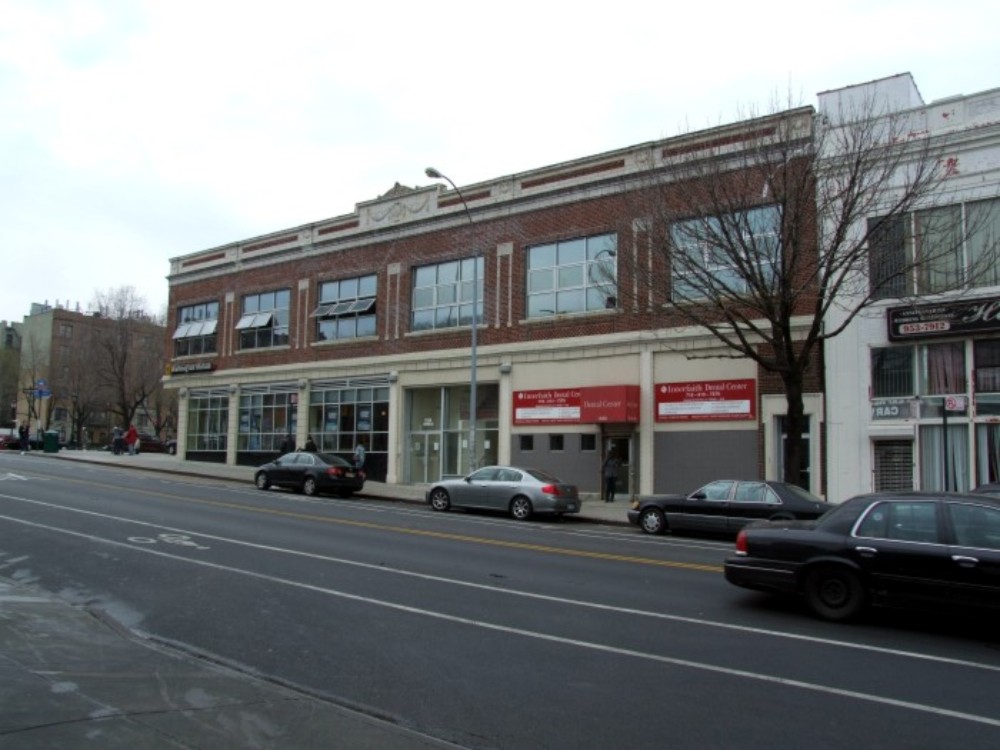Past and Present: The Bedford Rest, Crown Heights Hub for Brooklyn Cyclists, Conclusion
A look at Brooklyn, then and now. The Bedford Rest was established as a destination and rest stop in the late 1890s for the hundreds of cyclists enjoying Bedford Avenue and Eastern Parkway. As the years passed, and the cycling fad waned, the Rest maintained its reputation as a fine restaurant and event space near…
A look at Brooklyn, then and now.
The Bedford Rest was established as a destination and rest stop in the late 1890s for the hundreds of cyclists enjoying Bedford Avenue and Eastern Parkway. As the years passed, and the cycling fad waned, the Rest maintained its reputation as a fine restaurant and event space near the excitement of Ebbets Field and Automobile Row. All was well, until Prohibition.
When we think of Prohibition today, it’s remembered as a time when the nation disastrously toyed with a powerful experiment in social engineering. Banning alcoholic beverages seems ridiculous today. No doubt people thought so then, too, and were shocked when it actually happened.
Between 1920 and 1933, alcohol was illegal in the United States. The effects were devastating not only to consumers, but to businesses.
Across the country, breweries, distilleries, wine and spirits merchants, restaurants, saloons and bars went out of business by the thousands.Organized crime, based on bootlegging, grew and flourished.
The country went dry on January 17, 1920. By November of that year, the Bedford Rest was finished. Although the Rest had been running out of steam for years, Prohibition was the final nail in its coffin.
Cycling in Brooklyn, Ocean Avenue, NYC Parks
Its heyday had been those glorious years of the bicycle, as told in Part One. Perched on the top of the hill at Bedford Avenue and Eastern Parkway, the Rest became the official and unofficial starting point of races, bicycle club excursions and gatherings.
As the bicycle’s popularity was replaced by a new love for automobiles, the Rest adapted, as noted in Part Two. They remodeled, and concentrated more on their dining and drinking amenities, taking advantage of their prime site.
The only known photograph of the Rest shows a large one story building with deep verandahs with indoor and outdoor seating, and a roof garden. The undated postcard says “The Bedford Hotel.”
From Crown Heights North and Weeksville, by Wilhemina Kelly
Large theaters, like the Fox Savoy Theater and the Cameo Theater were established in the immediate neighborhood, as was the large armory for the Squadron C Cavalry Regiment, only a block away.
This end of Crown Heights was growing rapidly, with apartment buildings and houses filling in the empty lots, and the empty land south of Eastern Parkway.
It was a mixed income area, with wealthy people in the mansions along the Parkway and on President Street, and more middle class people in the apartments and the two-family houses going up all over the neighborhood.
By the time Prohibition began, Bedford Avenue in Crown Heights was a mixed-use boulevard. Flats buildings took up many of the lots between Atlantic Avenue and Eastern Parkway, but more and more land was going to automobile related businesses, especially auto showrooms. Even some of the flats buildings saw their ground floors hollowed out for showrooms.
At the time, in the early 1920s, there were dozens of independent automobile companies. Some, like Studebaker, built large showrooms. Most were more modest, but there were a lot of them. They only needed a storefront big enough to hold a few cars.
Since Bedford Avenue was now officially Automobile Row, with customers coming from all over, the demand for space here was tremendous.
A grand promenade space like the Bedford Rest could not survive without alcohol. The owners decided to sell this prime location. In November of 1920, they announced an auction of all of the restaurant’s furnishings and equipment. The Bedford Rest quietly died. There wasn’t even a funeral.
Soon afterward, the Brooklyn Eagle announced that the property had been sold, the building would be torn down and an automobile dealership was likely to go up in its place.
Google Maps
In 1921, the paper announced that plans for the site had been finalized. The prime site was called the “last piece of unimproved land on Bedford Avenue.”
The entire block front of Bedford between Eastern Parkway and Lincoln Avenue was leased for 45 years to a company that would built a state of the art auto showroom that could house one or more automobile companies.
By 1923, the Eagle was proud to announce that the new showroom was finished. The building at 1534 Bedford Avenue was a Building of the Day in 2013.
It was designed in the Colonial Revival style by Albert Kahn and Ernest Wilby for the Ford Motor Company. They in turn leased it to the Milford-Haas Motor Company, which became the Haas Motor Company, a Ford dealership.
Albert Kahn was one of the pioneers of reinforced concrete construction. He and his brother Julius, an engineer, designed some of the earliest and most impressive reinforced concrete factory buildings for Ford, including Ford’s “Crystal Palace” in Highland Park, Michigan.
Kahn, with the assistance of Ernest Wilby, designed factories and showrooms for Ford all across the country. In addition to factory designs, he was quite adept at the popular design styles of the day, including the Colonial Revival. This building mixes the industrial with the residential, creating a showroom building that their target customers would be proud to buy a car in.
The showroom remained with the Haas Company into the 1930s. By then, like the bicycle shops before them, the auto dealerships began moving elsewhere, this time chasing the expanding population deeper into Brooklyn and Queens.
Photo by Suzanne Spellen
So once, again, this was a great place for a restaurant.
In 1933, Prohibition was lifted. The nation rejoiced, and bars and clubs reopened as fast as possible. Once illegal speakeasies opened again, this time as legal establishments.
The popularity of the old Brooklyn Rest prompted new owners to try again. The new Brooklyn Rest opened in November of 1935.
The owners wanted to recreate the past. They even hired a detective agency to track down Dick, the popular bartender back in the day. He was found, and talked into coming out of retirement to once again hold court behind the bar.
The new Bedford Rest opened on November 20, 1935, with city dignitaries on hand, as well as a house band, good food, floor shows, dancing and merriment.
And so it went, through the war years, and beyond.
The last mention of the Bedford Rest was in 1947. A nightlife columnist for the Brooklyn Eagle noted that the Rest had an oval shaped bar on one end of the room and a bandstand on the other. He said that if you wanted a place to dance and enjoy the nightlife, this was your place.
He also said that it was a first rate restaurant, specializing in steaks and chops, as well as Italian food. He praised the pastas and sauces, dishes like veal scallopini, and their lobster and other seafood.
The new Bedford Rest lasted until the 1950s. It was then purchased by an impresario named Morty Schnabel who changed the name to the Town Hill Supper Club. And now, the stars came out to play.
From the mid-1950s until the early 1960s, the Town Hill Supper Club was one of Brooklyn’s best venues for popular black performers. Sam Cooke, Della Reese, Ben E. King, Brook Benton, Jackie Wilson, Ray Charles, Little Anthony and the Imperials, Chubby Checker, and more – they all played here.
Little Anthony & the Imperials, via classicurbanharmony.com
Dinah Washington threw herself a birthday party here in 1958, and a Crown Heights educator named Shirley Chisholm won a contest here in 1960, well before her political career.
The Club became a mecca for African Americans in Brooklyn. Not just for the shows featuring the great musicians, but also for conferences, fund raisers and other events. As in the days of old, it was seen as a great social coup to be seen at the corner of Bedford and Eastern Parkway. But now, it was black folks being seen.
The Supper Club lasted into the 1960s, and disappeared forever, another casualty of white flight, urban ills, city disinvestment in the black community, and the changing demographics of Brooklyn.
The buildings were subdivided. The Lincoln Place annex became a church, the Eastern Parkway side a drug store, variety store, and clinics. It wasn’t until the 21st century that things changed yet again.
Today, the building houses a Chase Bank, a dental center, and the Lincoln Place annex holds a diabetes clinic.
It’s hard to believe how much Brooklyn history took place on this corner of Eastern Parkway and Bedford Avenue. It all started with the bicycle.
Bikers at Bedford and Atlantic Avenues, 1896. Brooklyn Public Library
















I know an old timer who did security at that building during the 1950’s when it started showcasing soul stars.
What a fascinating twist! I thought the story was going to end with the death of cycling and the rise of the automobile. I’ve spent a lot of time near this building–I never knew that such huge mid century acts performed here. thank you!